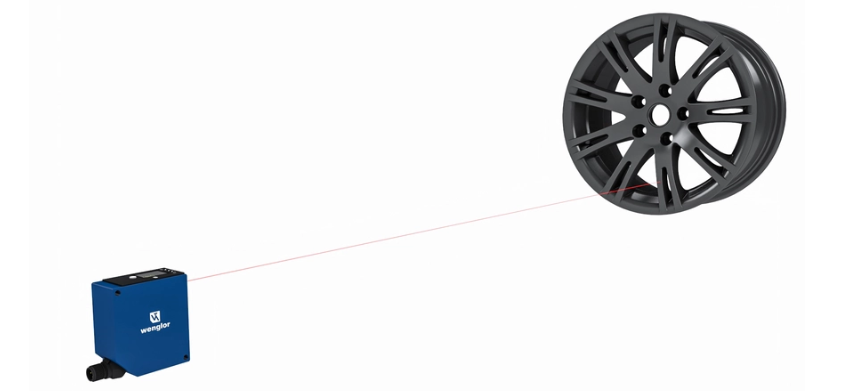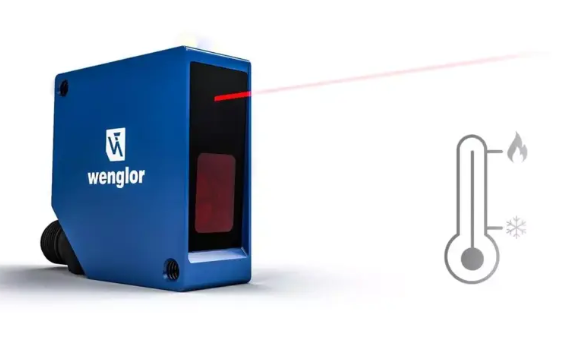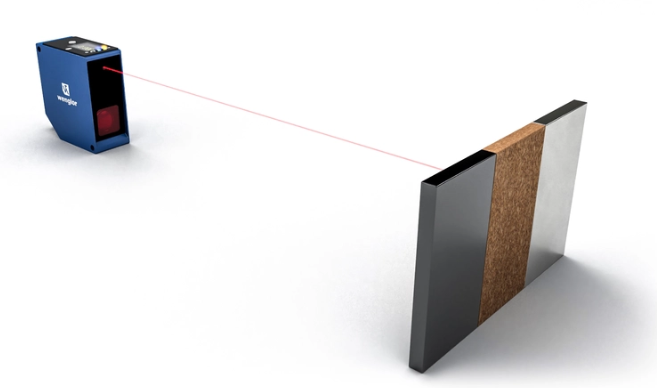
The P3EC sensors are part of the P3 series of laser distance sensors and are characterized by their outstanding measuring accuracy in a working range of 150 to 1,000 mm. With a maximum linearity deviation of just 850 µm, the P3EC distance sensors are the optimal choice for applications requiring precise measurements over long distances.
Product Highlights:
 Precise Object Detection over Long Distances:
Precise Object Detection over Long Distances:
- Precise measurement results with a maximum linearity deviation of just 850 µm
- Detection of small objects with a reproducibility up to 30 µm
- Excellent optical imaging thanks to specially curved glass lenses
Short Warm-Up Time Due to Low Temperature Drift:
 High temperature stability due to low temperature drift of up to 75 µm/K
High temperature stability due to low temperature drift of up to 75 µm/K- Very fast availability of stable measured values in < 5 minutes after system start-up thanks to built-in temperature sensors
- High-quality glass lenses and temperature-stable aluminum housing
Measurement on Different Shapes and Surfaces:
 Automatic adjustment of the CMOS chip exposure time
Automatic adjustment of the CMOS chip exposure time- Reliable detection on different object colors and brightness
- Stable measured values independent of the object’s degree of reflection
Areas of Usage:
For thickness and differential measurement, the P3 sensors offer efficient main/secondary operation, which enables the calculation of the thickness or difference. The calculated thickness is clearly shown on the display and can be used flexibly for switching outputs, analog outputs or IO-Link communication. This removes the need for a separate analysis module and complicated calculations in the control system. The sensors offer a user-friendly solution, where the mode is configured automatically when the wenglor patented T-splitter is used. This greatly simplifies integration and usage and offers precision in thickness measurement in various applications.
In addition to thickness measurement, a number of other innovative functions such as Jump edge detection, intensity evaluation and much more are possible with the P3 sensors.
Applications:
Guidance of Robot Grippers for Roof Mounting in Car Assembly:
In fully automated final assembly of passenger cars, roofs are inserted precisely into painted bodies using robot grippers. During this process, the glass roofs are gripped from a storage container and inserted with millimeter precision. Four measuring triangulation laser distance sensors with blue laser light reliably position the gripper arm in relation to the body. The sensors are installed on the side of the gripper module and transmit the position to the robot control. Thanks to the blue laser light, they measure precisely on painted, glossy or dark surfaces.
Diameter Measurement of Metal Coils in Punching Systems:
In punching machines in the metal processing industry, continuous material replenishment of sheet rolls, so-called coils, must be guaranteed. To avoid downtimes, it is necessary to detect the end of the material at an early stage to initiate an automatic roll change. For this purpose, the diameter of the shiny metal coils is precisely monitored via laser distance sensor triangulation and communicated to the control system. If the diameter falls below a defined tolerance value, a signal to replace the sheet rolls is automatically sent.
Presence Check of Welded Nuts:
Welded nuts are used in car body construction, which are automatically welded to sheet metal parts to screw assemblies together. They are placed in a welding fixture on a mandrel before a robot positions and centers the body part. Before the nut is then welded to the sheet metal part with welding tongs, a laser distance sensor triangulation must check whether the nut is placed on the mandrel. Due to the large working range with high precision, the sensor can be mounted further away from the process to protect the sensor.

 High temperature stability due to low temperature drift of up to 75 µm/K
High temperature stability due to low temperature drift of up to 75 µm/K Automatic adjustment of the CMOS chip exposure time
Automatic adjustment of the CMOS chip exposure time